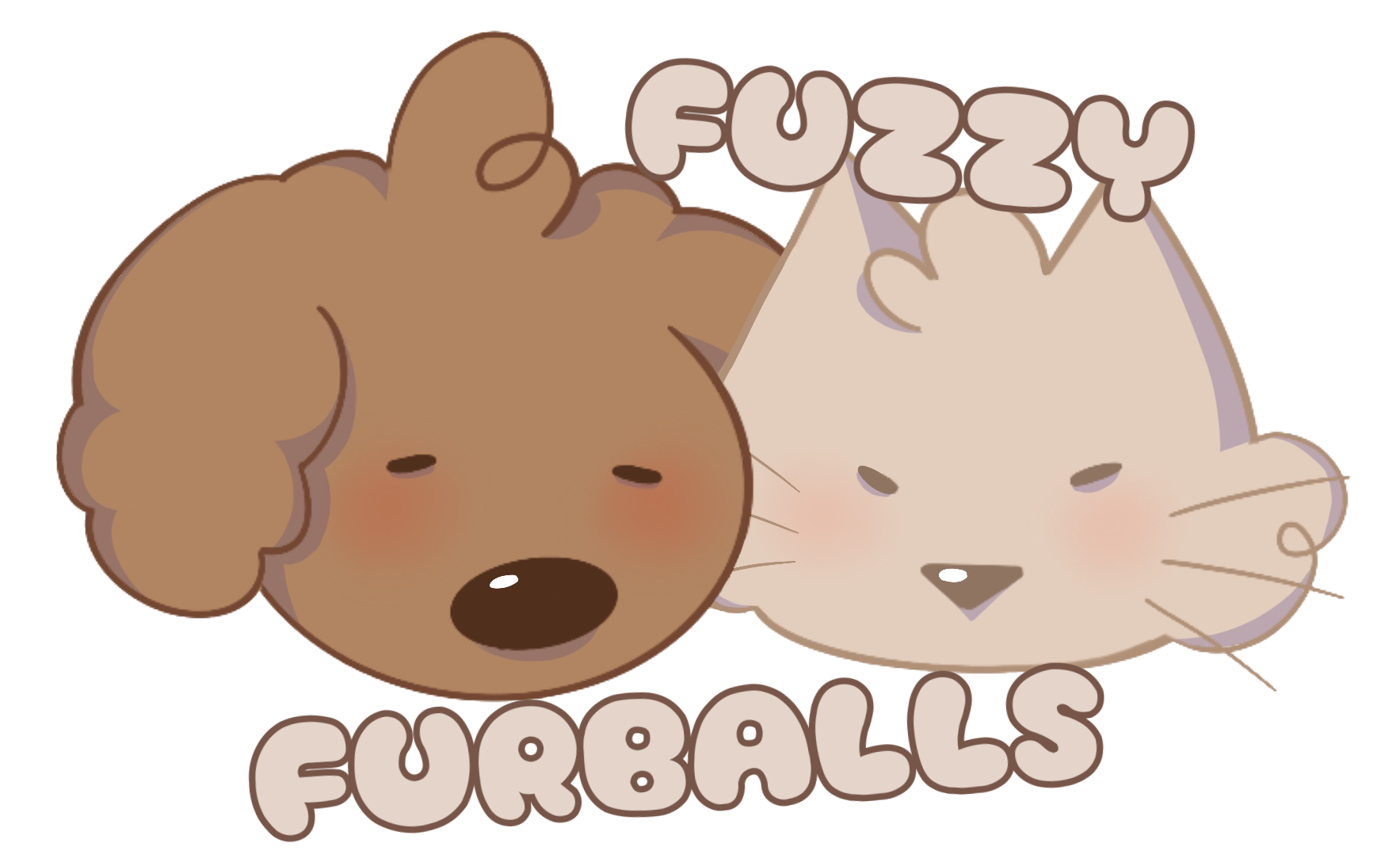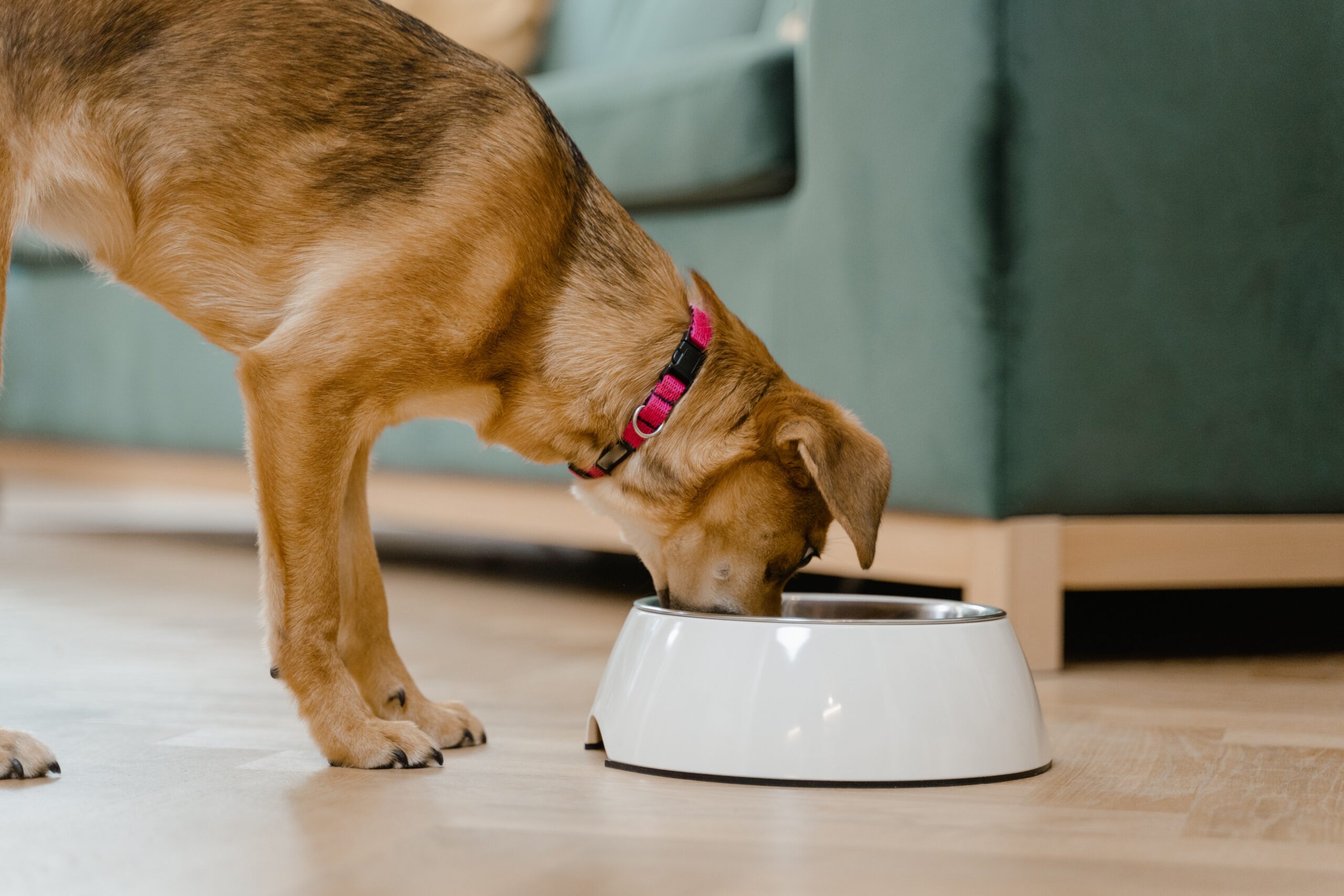Introduction
Choosing the right dog bowl is a crucial decision for any dog owner. While it may seem like a simple task, the type of bowl you select can have a significant impact on your dog’s overall well-being and dining experience. A dog bowl is more than just a container for food and water—it is a tool that can promote good health, safety, and comfort for your furry friend.
When considering a dog bowl, there are several factors to keep in mind. The material and design of the bowl, its size and capacity, shape and functionality, hygiene and maintenance requirements, special considerations for specific needs, safety features, and durability are all essential aspects to consider. By carefully evaluating these factors, you can ensure that you choose a bowl that best suits your dog’s needs.
In this article, we will explore these various factors in detail, providing you with valuable insights to make an informed decision when selecting a dog bowl. Let’s delve into the world of dog bowls and discover why choosing the right one matters for your beloved pet.
Material and Design
Different types of materials used in dog bowls (e.g., stainless steel, ceramic, plastic)
Dog bowls come in a variety of materials, each with its own advantages and considerations. Common materials used in dog bowls include stainless steel, ceramic, and plastic. Stainless steel bowls are highly durable, easy to clean, and resistant to bacteria. Ceramic bowls are aesthetically pleasing and can help keep water cool, but they may be prone to chipping or breaking. Plastic bowls are lightweight and affordable, but they can harbor bacteria and may not be as durable as other materials.
Pros and cons of each material
- Stainless Steel:
- Pros: Durable, easy to clean, resistant to bacteria, and non-toxic.
- Cons: Can be noisy, may slide on certain surfaces.
- Ceramic:
- Pros: Attractive, keeps water cool, and heavy enough to resist tipping.
- Cons: Prone to chipping or breaking, may require more delicate handling, and can absorb odors over time.
- Plastic:
- Pros: Lightweight, affordable, and available in various colors and designs.
- Cons: May harbor bacteria, can scratch easily, and may not be as durable as other materials.
Factors to consider when selecting a bowl material
When choosing a material for your dog’s bowl, consider factors such as durability, ease of cleaning, safety, and potential allergenic reactions. Additionally, take into account your dog’s behavior and specific needs. For example, if your dog tends to chew on its bowl, a stainless steel or ceramic bowl may be more suitable than plastic.
Importance of choosing a safe and non-toxic material
Selecting a safe and non-toxic material is paramount for your dog’s health. Some plastic bowls may contain harmful chemicals like BPA, which can leach into food or water. Opting for stainless steel or ceramic bowls ensures that your dog is not exposed to potential toxins. Additionally, these materials are less likely to cause allergies or sensitivities, making them a safer choice for dogs with specific dietary restrictions or sensitivities.
By carefully considering the material and design of your dog’s bowl, you can provide a safe, hygienic, and long-lasting feeding experience for your furry companion.
Size and Capacity
Importance of selecting an appropriate bowl size based on the dog’s breed and size
Choosing the right size of a dog bowl is crucial for ensuring your dog’s comfort and well-being during mealtime. Dogs come in various breeds and sizes, and their bowl size should align with their specific needs. A bowl that is too small may cause frustration and hinder proper food intake, while an oversized bowl can lead to overeating or difficulties in reaching the food.
Consider your dog’s breed and size when selecting a bowl. Larger breeds, such as Great Danes or Saint Bernards, require bowls with a larger diameter and greater depth to accommodate their size and prevent them from knocking over the bowl. On the other hand, smaller breeds, like Chihuahuas or Yorkshire Terriers, would benefit from bowls with smaller diameters that make it easier for them to access their food.
Factors to consider when determining the right capacity
Determining the appropriate bowl capacity goes hand in hand with selecting the size. The capacity of the bowl refers to the amount of food or water it can hold. Several factors should be considered when determining the right capacity for your dog’s bowl.
- Daily food intake: Consider the recommended daily food intake for your dog’s breed and size. This information can usually be found on the dog food packaging or obtained from your veterinarian. Divide the daily intake into two or three meals to determine the approximate capacity needed for each feeding.
- Water consumption: Dogs need access to fresh water throughout the day. Consider your dog’s water consumption habits when selecting a bowl. Ensure that the bowl’s capacity allows for an adequate supply of water to keep your dog hydrated without frequent refills.
Benefits of using a bowl with the correct size and capacity
Using a bowl with the correct size and capacity offers several benefits for your dog’s feeding experience:
- Comfortable eating position: A properly sized bowl allows your dog to eat in a natural and comfortable position, reducing strain on their neck and joints.
- Controlled food intake: The right bowl size helps prevent overeating, aiding in weight management and preventing digestive issues such as bloating or vomiting.
- Hydration maintenance: Adequate bowl capacity ensures that your dog has enough water available to stay hydrated throughout the day, promoting overall health and well-being.
By selecting a dog bowl that matches your dog’s size and considering the appropriate capacity, you provide a comfortable and balanced feeding experience, supporting your dog’s health and happiness.
Bowl Shape and Design
Various bowl shapes available (e.g., standard, raised, slow-feed, puzzle)
When it comes to dog bowls, there is a range of shapes and designs to choose from, each serving different purposes. Some common bowl shapes include standard, raised or elevated, slow-feed, and puzzle bowls.
- Standard Bowls: These are the traditional, flat-bottomed bowls that are commonly used for everyday feeding. They come in various sizes and materials to accommodate different dog breeds and sizes.
- Raised or Elevated Bowls: These bowls are designed with a raised platform or stand to elevate the bowl off the ground. They can be beneficial for larger dogs, older dogs, or those with joint or mobility issues, as they promote a more comfortable eating position by reducing strain on the neck and back.
- Slow-Feed Bowls: These bowls have specialized designs, such as ridges, mazes, or obstacles inside, which help slow down a dog’s eating pace. They are particularly useful for dogs that tend to eat too quickly, as they encourage them to eat more slowly and prevent issues like choking, bloating, or indigestion.
- Puzzle Bowls: These interactive bowls have intricate designs or hidden compartments that require dogs to work and “solve” the puzzle to access their food. They provide mental stimulation and can be beneficial for dogs that need mental engagement during mealtime, helping to prevent boredom or excessive eating.
Advantages and disadvantages of different bowl shapes
- Standard Bowls:
- Advantages: Widely available, suitable for most dogs, easy to clean, and come in various sizes and materials.
- Disadvantages: May not address specific feeding challenges like fast eating or flat-faced breed needs.
- Raised or Elevated Bowls:
- Advantages: Promote better posture, especially for large or senior dogs, reduce strain on joints, and can aid digestion.
- Disadvantages: Not suitable for all dogs, may not be necessary for those without specific health or mobility issues.
- Slow-Feed Bowls:
- Advantages: Encourage slower eating, reduce the risk of choking or bloating, and help with portion control.
- Disadvantages: Some dogs may become frustrated or lose interest in the bowl’s design, and they may require extra cleaning due to crevices or ridges.
- Puzzle Bowls:
- Advantages: Provide mental stimulation, slow down eating, and promote problem-solving skills.
- Disadvantages: Require more time for mealtime, may not be suitable for dogs with limited patience or those who become frustrated easily.
Considerations for selecting the right shape for specific dog needs (e.g., flat-faced breeds, fast eaters)
When selecting the right bowl shape for your dog, consider their specific needs and challenges:
- Flat-Faced Breeds (e.g., Bulldogs, Pugs): Opt for shallow or wide bowls that allow them to access their food easily without putting strain on their flat faces.
- Fast Eaters: Choose slow-feed bowls with ridges or mazes that encourage slower eating and prevent gulping down food too quickly.
- Overweight Dogs: Consider puzzle bowls that require mental engagement during feeding, as they can slow down eating and prevent overconsumption.
- Senior Dogs or Those with Joint Issues: Elevated bowls can provide a more comfortable eating position, reducing strain on their neck and back.
By considering the specific needs of your dog, you can select a bowl shape and design that promotes a healthier and more enjoyable feeding experience.
Hygiene and Maintenance
Importance of easy cleaning and maintenance
Maintaining proper hygiene for your dog’s bowl is essential to ensure their health and prevent the growth of bacteria or mold. Easy cleaning and maintenance of the bowl play a vital role in keeping it in a sanitary condition.
Hygienic features to look for in dog bowls
When selecting a dog bowl, consider the following hygienic features:
- Dishwasher-safe: Look for bowls that are labeled as dishwasher-safe, as this makes cleaning more convenient and ensures thorough sanitation.
- Smooth surfaces: Opt for bowls with smooth surfaces, as they are easier to clean and prevent bacteria from clinging to rough or textured surfaces.
- Removable parts: Some bowls may have detachable parts, such as removable inserts or mats, which facilitate easier cleaning and prevent food or water from accumulating in hard-to-reach areas.
Tips for cleaning and disinfecting different types of bowls
Cleaning and disinfecting your dog’s bowl regularly is crucial for maintaining hygiene. Follow these tips based on the type of bowl material:
- Stainless Steel: Stainless steel bowls are generally dishwasher-safe, but you can also hand wash them using mild dish soap and warm water. Rinse thoroughly and dry completely to prevent water spots or bacterial growth.
- Ceramic: Hand wash ceramic bowls using mild dish soap and warm water. Check for any cracks or chips that may harbor bacteria. Avoid using abrasive cleaners that could damage the surface.
- Plastic: Plastic bowls should be washed by hand using a mild dish soap and warm water. Inspect plastic bowls regularly for signs of wear or scratches that can harbor bacteria. Replace them if they become damaged or worn out.
Special Considerations
Allergies and sensitivities: Bowls suitable for dogs with food allergies
If your dog has food allergies or sensitivities, it’s important to consider the materials used in their bowl. Opt for bowls made from non-porous materials like stainless steel or ceramic. These materials are less likely to retain food particles or allergens, reducing the risk of triggering an allergic reaction. Avoid plastic bowls, as they can be more porous and may harbor allergens or bacteria.
Joint and mobility issues: Elevated or raised bowls for improved comfort
For dogs with joint problems or mobility issues, using elevated or raised bowls can provide significant benefits. These bowls are designed with a raised platform or stand that elevates the bowl off the ground. By feeding your dog at a higher level, you can reduce the strain on their joints, neck, and back. This can be especially beneficial for larger breeds or senior dogs who may have difficulty bending down to eat from floor-level bowls.
Travel-friendly options: Collapsible or portable bowls
When you’re on the go with your dog, having a travel-friendly bowl is essential. Collapsible or portable bowls are convenient options for feeding your dog during outings or while traveling. These bowls are typically made from lightweight and flexible materials that can be easily folded or collapsed to save space. Look for bowls that are durable, leak-proof, and easy to clean. They should be compact enough to fit in your bag or attach to a leash, allowing you to provide food and water for your dog wherever you are.
Taking these special considerations into account ensures that your dog’s feeding experience is tailored to their unique needs. Whether it’s addressing allergies, improving comfort for joint or mobility issues, or providing convenience during travel, selecting the right bowl can greatly enhance your dog’s overall well-being.
Safety Features
Anti-slip bases and mats for stability during feeding
When selecting a dog bowl, consider options that have anti-slip bases or include mats to provide stability during feeding. These features help prevent the bowl from sliding or tipping over while your dog is eating or drinking. Anti-slip bases are especially important for active or enthusiastic eaters who may inadvertently push their bowls around during mealtime.
Considerations for preventing tipping and spilling
To prevent tipping and spilling, consider the following factors when choosing a dog bowl:
- Bowl Weight and Shape: Opt for bowls with a wider base and a heavier construction. This makes it more difficult for your dog to tip the bowl over accidentally.
- Elevated Bowls: Raised or elevated bowls with sturdy bases offer increased stability and minimize the risk of tipping.
- Bowl Size and Capacity: Ensure that the bowl size and capacity are appropriate for your dog’s size and eating style. An oversized bowl can be more prone to tipping if it’s not adequately balanced.
Potential hazards to watch out for in certain bowl designs (e.g., removable parts, sharp edges)
While selecting a dog bowl, it’s important to be mindful of potential hazards that certain designs may pose. Consider the following:
- Removable Parts: Some bowls come with detachable parts or accessories, such as inserts or slow-feed attachments. Ensure that these parts are securely attached and do not pose a choking hazard to your dog.
- Sharp Edges: Inspect the bowl carefully for any sharp edges or rough surfaces that could potentially harm your dog’s mouth or tongue. Opt for bowls with smooth, rounded edges to prioritize safety.
- Material Durability: Choose bowls made from durable materials that are resistant to cracking, chipping, or breaking. This reduces the risk of your dog ingesting any small fragments or shards.
By selecting dog bowls with safety features, such as anti-slip bases and stable designs, and being mindful of potential hazards, you can create a safer feeding environment for your furry companion. Prioritizing safety ensures that your dog’s mealtime is enjoyable and free from accidents or injuries.
Cost and Durability
Balancing cost and quality
When choosing a dog bowl, it’s important to strike a balance between cost and quality. While cost-effective options may be tempting, investing in a higher-quality bowl can offer better durability and long-term value. Consider your budget, but also prioritize the overall quality and features of the bowl to ensure it meets your dog’s needs effectively.
Longevity and durability of different bowl materials
Different materials have varying levels of durability. Consider the following characteristics of common dog bowl materials:
- Stainless Steel: Stainless steel bowls are known for their durability and longevity. They are resistant to rust, corrosion, and breakage. They can withstand heavy use and are less likely to develop scratches or cracks, making them a long-lasting option.
- Ceramic: Ceramic bowls are generally durable but can be prone to chipping or breaking if dropped or mishandled. Opt for bowls made from high-quality ceramic and handle them with care to ensure their longevity.
- Plastic: Plastic bowls are affordable but may not be as durable as stainless steel or ceramic. They can scratch easily, making them more susceptible to harboring bacteria or becoming damaged over time. Look for bowls made from sturdy, food-grade plastic to maximize their durability.
Factors to consider when determining value for money
When evaluating the value for money of a dog bowl, consider the following factors:
- Quality and Durability: Assess the material, construction, and overall quality of the bowl to ensure it will withstand regular use and last over time.
- Features and Functionality: Consider the bowl’s design and features, such as anti-slip bases, raised edges, or special feeding mechanisms. Ensure that these features align with your dog’s specific needs.
- Ease of Cleaning: Look for bowls that are easy to clean and maintain. Consider the time and effort required for regular cleaning and if the bowl’s design supports hygienic feeding.
- Warranty or Guarantees: Check if the bowl comes with any warranty or guarantees that can provide added assurance of its quality and durability.
When making a decision, prioritize the long-term value and quality of the bowl rather than solely focusing on the initial cost. By choosing a durable and high-quality bowl, you can ensure that it lasts for an extended period, providing a reliable and safe feeding solution for your beloved canine companion.
Conclusion
Choosing the right dog bowl is a decision that should not be taken lightly. Throughout this article, we have explored various factors to consider when selecting a dog bowl. Let’s recap these important considerations and emphasize the significance of prioritizing your dog’s safety, comfort, and individual needs.
When choosing a dog bowl, consider the material and design, such as stainless steel, ceramic, or plastic, and their respective pros and cons. Pay attention to the size and capacity, ensuring it aligns with your dog’s breed and portion requirements. Explore different bowl shapes and functionalities, taking into account specific needs like flat-faced breeds or fast eaters. Prioritize hygiene and maintenance by selecting bowls with easy cleaning features and materials that are safe and non-toxic.
We also discussed special considerations such as selecting bowls suitable for dogs with allergies, addressing joint and mobility issues with elevated bowls, and investing in travel-friendly options like collapsible or portable bowls.
Above all, it’s crucial to prioritize your dog’s safety, comfort, and individual needs. Your dog’s bowl is more than just a feeding utensil; it plays a significant role in their overall well-being. By choosing a high-quality bowl that meets their specific requirements, you create a positive feeding experience and promote a happy and healthy pet.
So, whether you’re considering a stainless steel bowl for its durability, an elevated bowl to improve comfort, or a collapsible bowl for convenience during travel, make an informed decision that reflects your dog’s unique needs.
Investing in a suitable and high-quality dog bowl is an investment in your pet’s health and happiness. So, take the time to assess the options available, weigh the considerations, and select a bowl that provides the best combination of safety, functionality, and durability.
Remember, a well-chosen dog bowl is a simple yet essential step towards ensuring your furry friend’s well-being.










